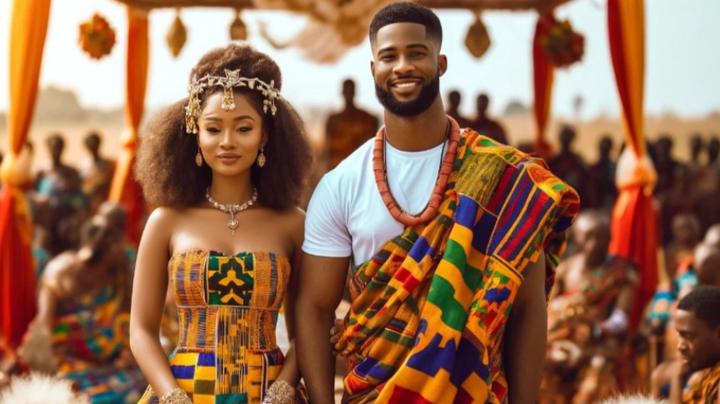Inter-ethnic marriages in Ghana have historically been shaped by cultural similarities, geographical proximity, and social interactions. While many ethnic groups traditionally preferred endogamous (within-group) marriages, modernization, urbanization, and increased social mobility have encouraged intermarriages between various tribes. The following are some of the most common inter-tribal marriage trends in Ghana:
1. Ewe & Ga-Dangme – The Ewe and Ga-Dangme ethnic groups, primarily located in the Volta and Greater Accra Regions, frequently intermarry. Their shared historical interactions and geographical proximity facilitate such unions.
2. Ashanti & Fante – As subgroups of the Akan ethnic group, Ashantis and Fantes have a long-standing tradition of intermarriage. Their shared linguistic and cultural heritage strengthens this bond, especially in the Central and Ashanti Regions.
3. Dagomba & Mamprusi – Both belonging to the Mole-Dagbani ethnic group, Dagombas and Mamprusis have strong cultural similarities, leading to frequent intermarriage.
4. Gonja & Dagomba – Given their historical interactions and geographical closeness in Northern Ghana, Gonjas and Dagombas often intermarry.
5. Krobo & Ewe – The Krobo (Dangme) and Ewe people have a history of intermarriage, particularly in the Eastern and Volta Regions, where migration and trade have fostered social integration.
6. Nzema & Ahanta – Located in the Western Region, the Nzema and Ahanta groups share cultural and linguistic ties that encourage intermarriage.
7. Fante & Ga-Dangme – The Fante and Ga-Dangme people, both coastal groups, have engaged in intermarriages for generations due to their mutual engagement in trade and fishing.
8. Dagaaba & Sissala – In the Upper West Region, Dagaabas and Sissalas frequently intermarry due to their close cultural and geographical ties.
9. Gonja & Wangara – The Gonjas have historical relations with the Wangara people, leading to frequent intermarriage, especially within northern and central Ghana.
10. Ewe & Ashanti – While historically distinct, modernization and increased educational and economic opportunities have contributed to rising intermarriages between Ewes and Ashantis, particularly in urban centers like Accra and Kumasi.
Conclusion
Inter-ethnic marriages in Ghana continue to evolve, with increasing integration across different groups. While cultural traditions still influence marriage patterns, modern trends indicate a gradual shift towards greater diversity in marital unions.
Sources: GhHeadlines, PulseGhana, journals.ug.edu.gh
